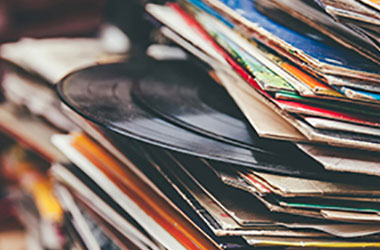Part 14 – A New Vinyl Start
A new vinyl start – how to avoid a few common pitfalls
So you have already seen massive activity on the vinyl record front, and you know that it has become quite easy to purchase records again. The next logical step would be to simply dust off that old turntable, stick it back into your system, and spin a record. Well, a few things should be considered:
- Is your stylus is good condition? You may still see it there and feel that it should be fine, but if the cartridge has not been used for many years, the suspension will most likely have deteriorated quite badly. With modern cartridges the rubber materials used in the suspension have advanced to a very high level. The rubber on a stylus that has not been used for many years will definitely have become damaged. The likelihood of the rubber not having perished is quite slim. The most common problem will manifest itself as high frequency tracking distortion and an audible screechy noise. Replacing a stylus should be a relatively simple and quick matter, but the chances are good that you will have to replace the cartridge in its entirety due to very old replacement styli not being available any longer. We can advise on Ortofon cartridges for optimum quality on playback at reasonable and competitive prices. In certain instances we might be able to replace older types, e.g. Audio Technica AT-91 or similar.
- Belt worn out? There are many generic rubber belts that can be replaced at very reasonable prices. This can be done very quickly and efficiently. The biggest problem with stretched belts is that the sound will be horrible and not natural at all. We can supply new belts for the majority of manufacturers. Well-known companies like Rega, Linn, Thorens, SME, Project and others are slightly more expensive than cheaper generic belts, but the precision and accuracy of these belts are also noteworthy and they last longer. Wear and tear is also less.
- Are you sure that the arm and cartridge are working optimally? It is very likely that the balancing on the arm has gone out but this can be sorted out quickly. It is very important that the correct tracking down force is adhered to as the groove can be destroyed if too a heavy force is applied. Never forget that once the groove is damaged you cannot repair it. Under normal conditions the groove and the vinyl compound has enough restitution or recovery to not cause permanent deformity, providing the tracking force is adhered to. Vinyl is a lot more resilient than given credit for, but there are normal logical limits that should not be exceeded, especially if you are tracking at forces that are too high.
Of course we are assuming that you would be using your old and existing turntable. However, bear in mind that technology does not stand still. This applies to turntables as well. No applications are really new when it comes to turntables but there have certainly been advances in how technology and materials have been changed and applied differently to enhance the listening experience. With the emphasis on more stability and precision, and more solidity and accuracy, turntables are no longer haphazard devices and newer turntables are much better at isolating and counteracting vibration, thereby making the task of the stylus in the groove so much easier, and thus more music is extracted from your existing records.
It stands to reason that new and modern turntables will sound better. Paying more generally also guarantees dearer materials and a higher level of engineering expertise. There is a minimum level of performance that should be considered. The hierarchy of turntables is very clear and logical, starting off with the best quality motor base and plinth, then moving on to the arm and only finally the cartridge. We can advise on the importance and relevance of each aspect, and the final proof is in the actual listening.


Recent Comments